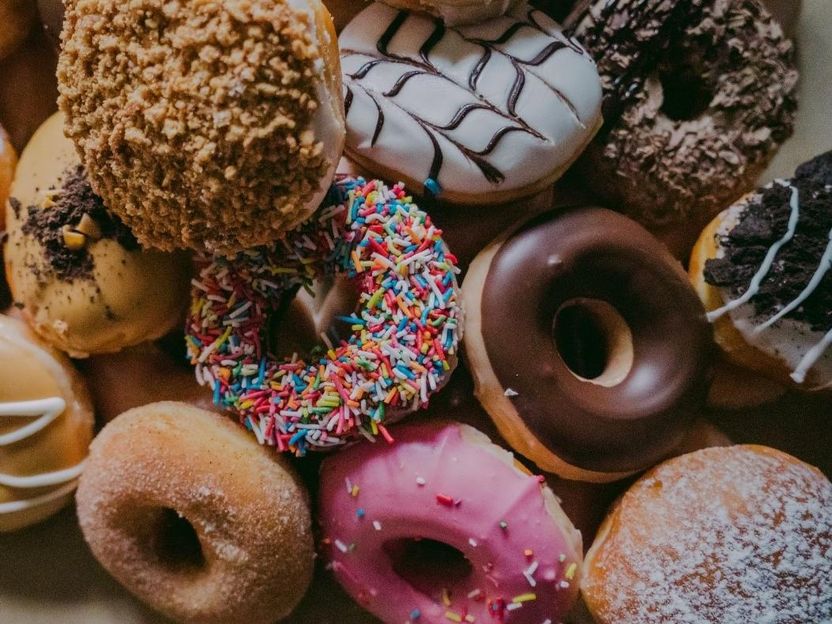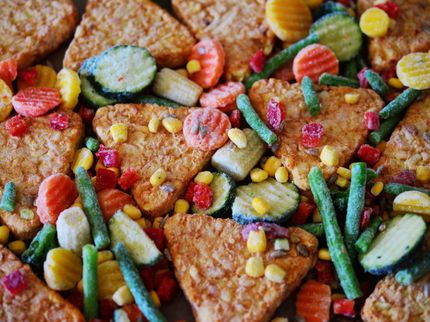Javier Sánchez Perona: "Ultra-processed foods are designed to be very appetizing and easy to consume".
The CSIC researcher at the Instituto de la Grasa signs the latest volume of the collection ¿Qué sabemos de? (CSIC-Catarata)
pastries, industrial pizzas, soft drinks, sauces and chips with the most exotic aromas and flavors fill the shelves of any supermarket. So much so that they already take up more space than fresh foods such as fruit, vegetables, meat or fish. In the last half century we have seen an explosive growth in the manufacture and consumption of ultra-processed foods, but these products that seem to call out to us from the shelves of food stores can have negative consequences for our health if we abuse their consumption.

50% of the processed food budget goes to packaging, 40% to marketing and only 10% to ingredients.
CSIC
What is the scientific evidence in this regard? What is it about those cookies or sausages that we can't stop eating them? Javier Sánchez Perona, CSIC researcher at the Instituto de la Grasa, answers these questions in the book Los alimentos ultraprocesados. The latest title in the collection What do we know about? (CSIC-Catarata) explains the composition of these products, how they reached our table, what relationship they have with the high rates of overweight and obesity in the adult and child population and what public and individual measures can be taken to reduce their consumption.
Sugar, salt and fat, an explosive combination
If we think of a chocolate palm and an oil and tomato toast, there will be no doubt that the former is an ultra-processed food. However, sometimes the differences are not so clear, so it is not always easy to assign this designation to a product. "Generally speaking, ultra-processed foods are formulations made from food-derived substances and additives, in which other foods cannot be identified in their original form and which are rich in fat, salt and sugar, as well as having little dietary fiber, protein, vitamins and minerals," explains Sánchez Perona. The presence in the ingredients of additives such as glutamate or other compounds such as thickeners or binders that are not usually found in the kitchens of our homes is another indication that we are dealing with an ultra-processed food.
The development of the food industry, improvements in the preservation, safety and organoleptic characteristics (taste, texture, etc.) of food products and the reduction in their price have boosted the presence of ultra-processed foods in the markets and, therefore, their consumption. If we look at the figures, "theUnited States takes the lead. Ultraprocessedfoods account for 57.9% of the daily energy consumed in this country, but in Europe we also have our own. A study showed that citizens of the United Kingdom, Germany, Ireland and Belgium consume almost half of their daily calories in the form of ultra-processed foods," says the CSIC researcher. In Spain, "a study on the evolution of processed food consumption from 1990 to 2010 concludes that the percentage of ultra-processed foods in all food purchases almost tripled, from 11% to 31.7%. The most purchased ultra-processed products were bakery products, breakfast cereals, sweet snacks, dairy beverages, industrial breads and soft drinks," it adds.
Cheap and easy to buy
Ultra-processed foods are based on complex preparations that use many ingredients and are produced in factories with significant food safety measures. This might lead one to think that their cost should be high, but the truth is that the price of a packet of cookies is just over one euro, while a tray of fresh strawberries can cost five times as much. According to the author, this difference is due, among other factors, to the fact that "ultra-processed foods are made with low-quality ingredients - fats and sugar - from developing countries with low wages, which makes the product extremely cheap". They also have a high profitability for the producer. "Fish is not cheap, but the fish sticks may contain only 50% fish; the rest is a very cheap coating. The company sells the batter almost at the price of the fish. Another example is industrial fruit juices, which usually contain only a small part of real juice and the rest is water and sugar," he adds.
In addition to the price, the very gesture of buying and consuming ultra-processed products is much simpler: they require no processing, just opening and consuming or, at most, heating. "In the age in which we live, with a high degree of stress, these foods offer a simple alternative, which does not require forethought, can be kept for a long time at home and does not require culinary skills," observes Sánchez Perona.
And to all this is added a cascade of eye-catching colors and messages that fill the packaging of these foods. The author provides a surprising fact: "it has been estimated that 50% of the budget for many of these foods is spent on packaging, 40% on marketingand only 10% on ingredients".
Why are we so attracted to them?
As Sánchez Perona explains, ultra-processed foods appeal to our most primal instincts: "Our organism has a reward system, through neurotransmitters and hormones. When there is a stimulus that we should find pleasurable, the brain releases substances that cause us pleasure (endorphins) or desire (dopamine). Sometimes exaggerated reward responses to certain stimuli appear. This is what the zoologist Nikolaas Tinbergen called supernormal stimuli, which mainly affect our most primal instincts, such as eating".
But why do we start salivating when we see a picture of a pizza in a box or a picture of a chocolate bun? "The response that many people generate to ultra-processed foods is an example of supernormal stimulation. These foods are designed to be more appealing than low-processed foods and elicit a much greater emotional response, which facilitates the development of addictive behaviors," he explains.
Research on ultra-processed foods
Although there is no complete scientific consensus, the NOVA classification system developed by Brazilian researcher Carlos Augusto Monteiro is the most widely used in scientific studies on the effect of ultra-processed foods. "In the 1980s Monteiro observed that the most relevant dietary guidelines did not include industrial foods, but were based on foods that were little or not processed at all, as if cooking was the same as in the mid-20th century," comments the Fat Institute scientist. "That's why a new food classification system was created, taking into account the degree of processing, which has been evolving to be as accurate as possible."
Based on this classification, numerous studies have been carried out with adult and child populations. Although most of them are observational, "there is sufficient data to indicate that the consumption of ultra-processed foods is associated with a greater presence of diseases such as obesity, diabetes or cardiovascular pathologies," says Sánchez Perona.
To alleviate in some way this 'call' to the intake of ultra-processed foods, the text mentions some of the measures adopted by public institutions, from taxes on sugary drinks, as occurs in Latin American countries, to front labeling that helps consumers to make informed decisions about the foods they buy. One example is color-based labeling systems, such as the "traffic light" model. It is used in the United Kingdom and Ecuador and uses green to indicate beneficial content, amber for more or less harmful content and red for directly harmful substances. Nutri-Score, developed in France, is another such system; in addition to colors, it uses letters to indicate whether foods are more or less healthy.
The CSIC researcher also analyzes some of the applications that have recently emerged to scan labels and help consumers make healthier decisions when shopping. In any case, "it is not clear which system is the most suitable for incorporation into packaging or which is the most useful for identifying ultra-processed foods. It is paradoxical, but despite living in the information age, the public, especially younger people, consider themselves uninformed in this area," he concludes.
Note: This article has been translated using a computer system without human intervention. LUMITOS offers these automatic translations to present a wider range of current news. Since this article has been translated with automatic translation, it is possible that it contains errors in vocabulary, syntax or grammar. The original article in Spanish can be found here.































































